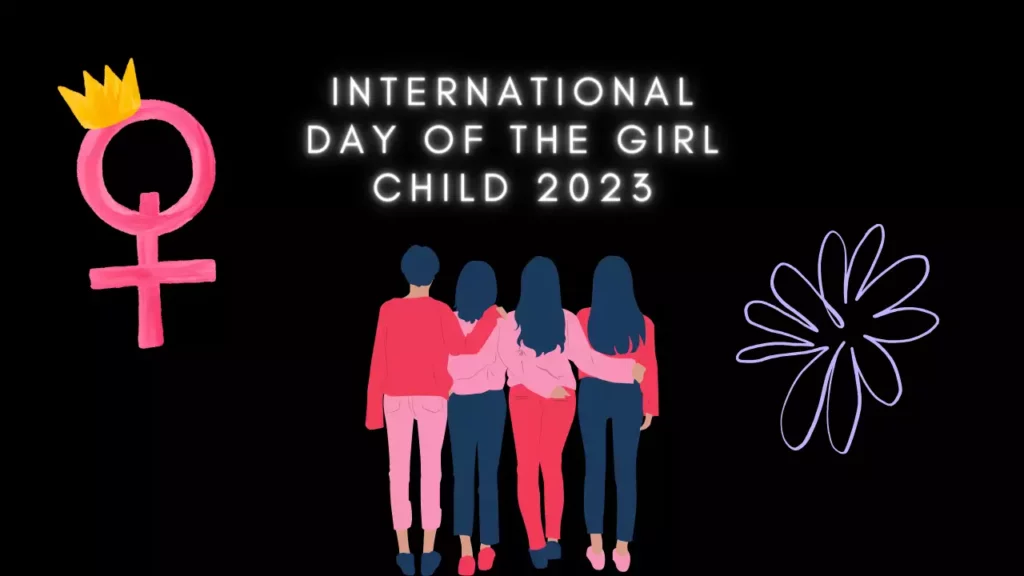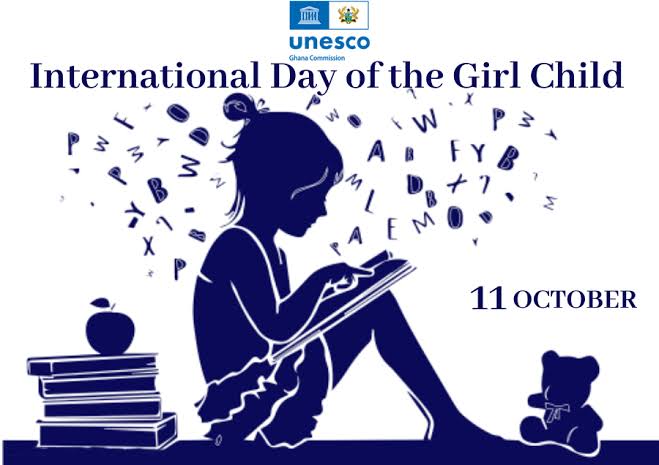But despite the benefits to be gleaned from a digitalised age, the world today is still divided into two halves—the digital half and the non-digital half, and unfortunately, a great percentage of girls and women belong to the non-digital half, with little to no access to such technologies…
By Ijeoma Anastasia Ntada
In 2011, the United Nations General Assembly adopted October 11 as the International Day of the Girl Child. It is a day set aside to celebrate the girl child; to amplify her voice, and to plead her case in an unequal society — one in which she is disadvantaged in several aspects, on account of her gender. The theme for this year is a unique one; “Digital Generation, Our Generation”. It stresses the need for digital inclusion for girls and women in an ever-evolving world where digital knowledge has become compulsory for everyone.
It is no longer news that the digital revolution has come, and technology has become an integral part of everyday living. Hence, every person, the girl child inclusive, must partake in this transformation, and be carried along in this digital generation.
Digital technology has spearheaded several positive changes for girls and women through avenues such as the Internet and social media. Social media, for one, has become a platform for girls to contribute to important conversations on social issues, and to amplify their voices on prevailing matters as they impact their lives. For example, in the past, important matters such as sexual assault and violence against women went unreported and the voices of the few women and girls who could summon courage to speak up were often quieted or under-represented. While there is silence still, and speaking up against abuse is still a work in progress, as opposed to the poor reception in the past, girls and women with Internet access are able to join forces to seek justice for affected girls by making content such as written posts and videos about such experiences.
(Read also: 8 African Women Amplifying the Voice of the Girl Child)
Over the years, girls have embarked on movements on social media platforms, such as the #MeToo movement which started gaining traction on social media as early as 2006, to speak up against sexual abuse, rape culture, and other forms of violence against women and girls. The Me Too hashtag became popularised in 2017, to draw more attention to sexual harassment faced by women. A few months ago, Prof. Cyril Ndifon, the Dean of the Faculty of Law at the University of Uyo, in Nigeria, was called out on X (formerly Twitter) for his infamous behaviour of sexual harassment towards his female students, which began after a video that showed female law students protesting Ndifon’s indecency went viral. These shared stories gave credence to the claim, and Ndifon’s history of sexual harassment was brought to light. Interestingly, a sexual assault case was filed against him in 2015, but it was swept under the carpet. Perhaps now, with the wide reach of this story, these girls can openly come forward and get the justice they deserve.

The Internet, and by extension, digital technology, has also helped girls and women build careers through content creation and influencer marketing. Nneka, a Korean Language enthusiast and tutor is a great example. As a Nigerian living in Nigeria, Nneka’s love for the Korean culture is evident, and she shares her exploration and interaction with the culture through social media. Her tenacity has attracted the attention of many, including the Korean government. Nneka has been able to build a career as a Korean language tutor, one that may not have been achieved without the Internet.
In 2023, digital technology has become incorporated into almost every sphere of work. More than 90% of jobs today already have digital components, and this will increase in the coming years. Suffice it to say that technology is the future of work, and it has become necessary for every individual to have at least basic tech knowledge in order to get better incentives and grow in corporate spaces. A lot of digital tech schools such as AltSchool Africa and Utiva are on the rise to teach skills like coding, web development, data analytics, and so many others. These schools are girls-inclusive, too, and they aim to bridge the gender digital gap through their programs. For example, in 2022, Utiva partnered with Binance to train and mentor more than 300 women and girls in technology.
(Read also: How Technology is Redefining the Culture of Work in Africa)
But despite the benefits to be gleaned from a digitalised age, the world today is still divided into two halves—the digital half and the non-digital half, and unfortunately, a great percentage of girls and women belong to the non-digital half, with little to no access to such technologies. This can be attributed to factors like poverty and geography. This situation leads to a gender digital divide, which is the gap between the availability and accessibility of digital technology between men and women. This gender digital divide has led to an unequal level of technological advancement, with girls at the bottom. It has hindered growth and has put a blockade on the benefits that exist in a digital world.

In one research carried out by the Zippia career platform, it was revealed that 34% of tech giant, Apple’s workforce are women, but only 24% of the technical jobs are held by women. Similarly, 29% of the workforce in Microsoft is made of women, but only 23% of its technical roles are held by women. Similar statistics can be found amongst other tech giants like Google and Facebook. It has been also found that only 11% of start-ups have a female CEO, and the STEM workforce, generally, is made up of only 34% of women.
It is easy to rebuff such statistics and surmise that the low turnout of girls and women in the digital space is more a lack of interest than anything else. But that is far from the case. Several young girls have an interest in pursuing careers in digital technology, but there are little to no opportunities available for them. There is also still a biased belief that girls should not venture into STEM and the digital space as a whole. Gender socialisation plays a crucial role in the career paths that girls take, as they are encouraged to pursue careers “suitable” for women like fashion design, catering, and teaching.
As we embrace the digital generation, we can encourage girls to pursue careers that encompass digital technology. We are in a digital world, and girls have the wit and intellect as much as their male counterparts. This year’s celebration of the International Day of the Girl Child is a call to bridge the gender digital gap and encourage fair play. While we acknowledge that this gap cannot be closed in one day, we can make great changes by adopting healthy practices. We can begin by educating the girls in rural communities about the transformative power of digital technology, first with the knowledge, and thereafter, resources should be made available to encourage them to explore every opportunity available. It is great that a lot of digital skills can be learnt online, most of what needs to be done is to provide the needed resources and equip the girls with the technical know-how. As we celebrate the International Day of the Girl today, we raise a toast to every girl and every change maker fighting for the causes of the girl child, and ensuring that girls are given equal chances at becoming digital leaders.
Ijeoma Anastasia Ntada writes and reads poetry, fiction and nonfiction. She has a couple of poems published in the Love Anthology, The Ducor Review, Visual Verse, Praxis Review and elsewhere. Ijeoma is also a photography enthusiast. She takes beautiful photographs and makes them art. When Ijeoma isn’t studying to become a Laboratory Scientist, you’ll find her talking about Afro Hair, femininity, and embracing all of her girlhood.




